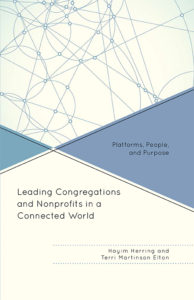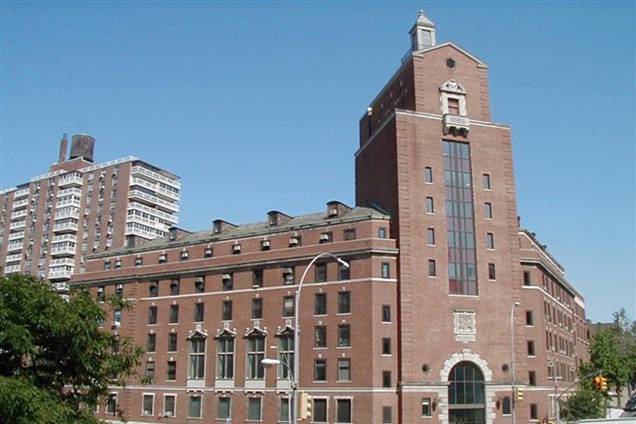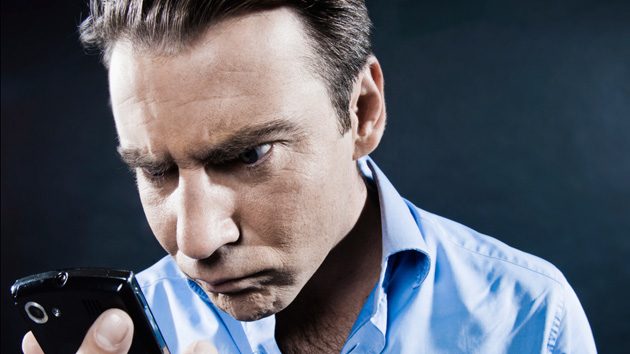More on: Leading Congregations in a Connected World: Platforms, People and Purpose
Now at a 40% Time-Limited Discount
This blog post is one of a continuing series on Leading Congregations in a Connected World: Platforms, People and Purpose, my newest book on congregations and nonprofits, co-authored with Dr. Terri Elton, Associate Professor Leadership at Luther Seminary. Whether We researched and wrote about Jewish and Protestant congregations and nonprofits that are navigating a paradigm shift in minimizing more cumbersome, hierarchical ways of working and fostering more fluid and creative networks to advance their missions.
Are innovation and entrepreneurship the same?
Innovation and entrepreneurship are significantly different although they’re often used interchangeably. Innovation means doing something that already exists in new ways or introducing something that is brand-new: either completely unprecedented or new for an organization although others have done it. Entrepreneurship is the ability to see and seize new opportunities. It’s also having a start-up and bootstrap mentality- using limited resources to test ideas until you decide to scale them up or close them down.
What are examples of “innovation” and “entrepreneurship” that illustrate the difference?
An innovator might work at improving “religious (or Hebrew) school” by introducing a new curriculum or a new professional development program for Jewish educators. An entrepreneur will look at the paradigm of religious school, determine that it needs to be replaced and change it to an after school Hebrew immersion program. By discarding the reigning paradigm and its assumptions, everything – from curriculum to fees, will not only be new but also evolve rapidly because there is no template for it. Skilled entrepreneurs will continue to see additional opportunities to improve this paradigm and scale it, and identify other ways to expand its impact and possibly create new start-ups, for example, focused on developing teacher talent for this new paradigm and providing experiential learning for families.
Can Denominations Innovate?
Each denomination has innovated at various times. For example, Reform Judaism has innovated in Jewish music and social justice; Conservative Judaism in its approach to Jewish law as both evolving and binding; Orthodox Judaism on its emphasis on the compatibility of traditional text study and secular learning. The Reconstructionist Movement is entrepreneurial in its ability to perceive new opportunities but has had to rely de facto on other denominations to scale them because of its relatively small numbers. Chabad is truly entrepreneurial because it consistently leads in identifying new opportunities and scaling them globally.
What About Nonprofits and Congregations on the Local Level?
In our book, we identified four pathways to innovation or, more accurately, three innovative pathways that we believe any congregation or nonprofit can pursue. We also studied two entrepreneurial organizations, one congregation and one nonprofit. These four pathways are:
reiterating the role;
cracking the code;
fusing the model; and
breaking the mold.
Only the fourth one, “breaking the mold,” meets the criteria of entrepreneurial.
Should Congregations and Jewish Nonprofits Be More Innovative and Entrepreneurial?
To summarize, entrepreneurship involves both an organizational orientation and a skill set. An organization may periodically innovate, but may not be considered especially innovative. On the other hand, an organization is either entrepreneurial or it is not. It can’t be partially entrepreneurial because being “entrepreneurial” is an all-in commitment that is hard-wired into an organization’s DNA. Entrepreneurial organizations are structured “laboratories,” with ongoing experimentation, success, failure, learning and advancing.
Congregations and Jewish nonprofits need to be more innovative if they want to continue to have impact – just look at any study on established Jewish institutions within the past decade and the conclusion is clear. They are innovating, but the pace of innovation is too slow. But not every congregation and Jewish nonprofit can be entrepreneurial. Even if they could, it wouldn’t be desirable. Why? Congregations and nonprofits also play a critical role in helping people reflect on the value of change. they are places where leaders can ask, “Just because we can change values and traditions, should we? What do we gain and what do we lose?” But cultivating organizational cultures that support greater innovation in more established Jewish organizations, and supporting entrepreneurial Jewish organizations is the very desirable for the future of the Jewish community!
 We see a significant role for congregations and nonprofits around the issue of community. But given how fragile and complex community is today, we believe that congregations will benefit by learning from one another. One opportunity for shared learning is in gaining greater understanding about the limits of digital space in engaging members and participants. What kinds of “conversations” are effective on digital platforms and which are best held in a physical space? What happens when a professional or volunteer publishes information about an issue that is unintentionally misleading or inaccurate—or simply false? One of clergy leader in our study framed the issue this way. He said that for now, he’ll take an old-fashioned town hall meeting about an important issue over a digital discussion because “there’s an accountability piece missing” online. When people don’t have to make eye contact with one another, they have to grapple with the impact of their words.
We see a significant role for congregations and nonprofits around the issue of community. But given how fragile and complex community is today, we believe that congregations will benefit by learning from one another. One opportunity for shared learning is in gaining greater understanding about the limits of digital space in engaging members and participants. What kinds of “conversations” are effective on digital platforms and which are best held in a physical space? What happens when a professional or volunteer publishes information about an issue that is unintentionally misleading or inaccurate—or simply false? One of clergy leader in our study framed the issue this way. He said that for now, he’ll take an old-fashioned town hall meeting about an important issue over a digital discussion because “there’s an accountability piece missing” online. When people don’t have to make eye contact with one another, they have to grapple with the impact of their words.



